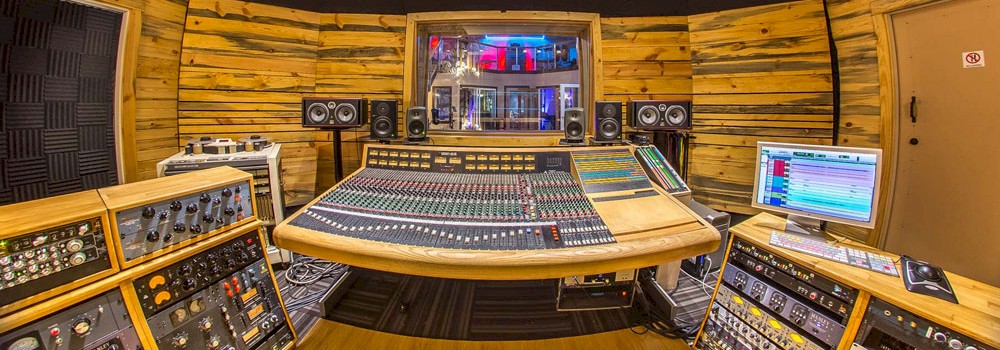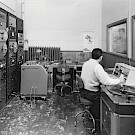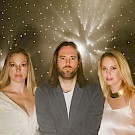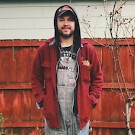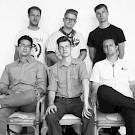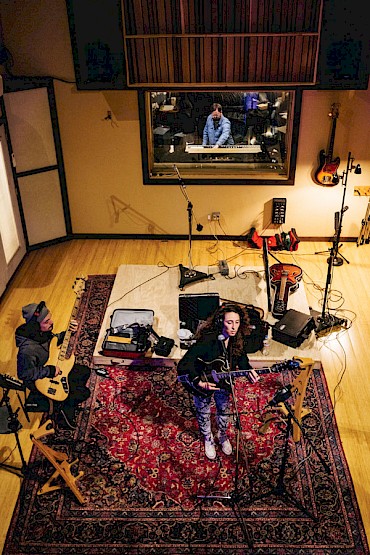 Moorea Masa recording her debut record at B-Side Studios with Raymond Richards behind the board: Photo by Jason Quigley—click to read more about Masa's recently released 'Shine A Light'"The number one instrument is the room,” says musician and engineer Steven Strauss. This credo is the primary reason why he spent years drawing up plans and eventually building East Burnside’s B-Side Studios himself.
Moorea Masa recording her debut record at B-Side Studios with Raymond Richards behind the board: Photo by Jason Quigley—click to read more about Masa's recently released 'Shine A Light'"The number one instrument is the room,” says musician and engineer Steven Strauss. This credo is the primary reason why he spent years drawing up plans and eventually building East Burnside’s B-Side Studios himself.
In fact, “There are no other professional recording studios in Portland that were built from the ground up with the intention of being designed as a studio,” notes producer, composer and partner Avi Brown. Strauss had his ideas vetted by professional acousticians and emerged with a studio that’s “designed as perfectly as my budget would allow,” he modestly says.
The result? An impressively beautiful and homey 2,000-square-foot space featuring a large live room with a 22-foot ceiling and overlooking balcony, four iso rooms with great sight lines (and a fifth connected to the control room), a conscious avoidance of parallel walls, analog and digital options, and plenty of gear, mics and more. The control room is a completely separate structure with an air gap between buildings, and “Each one of these isolation rooms has an independently poured concrete foundation so there’s no transfer of sound,” explains studio manager and producer Raymond Richards, pointing out the invisible underground.
“Even the subfrequencies moving through the floor are not an issue here,” Brown adds.
While all this creates an impressive versatility inside the technically sound space, Brown also expresses his desire to capture the ethereal. From Abbey Road to Muscle Shoals to Motown or Stax, “These studios had a sound,” he says. “You can tell when something was made in that space.” It was a combination of people, acoustics and gear that made those studios special, and the trio at B-Side are committed to emanating a warmth inside B-Side’s walls (specifically provided by the Burl converter).
“We have a sound, we have a vibe,” Brown says. “When you walk in here and you see all the blue knotty pine and all the cedar and you smell the wood, that is what we sound like.”
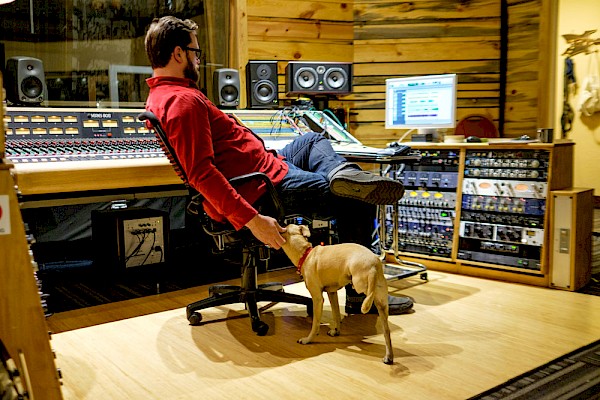 Richards and Scout hard at work: Photo by Justin KentTheir vibe is also an unconditionally hospitable one. B-Side is “a place where artists are continually welcome,” Strauss says. Scores of locals like Pink Martini, Cascade Crescendo, Zahira & Rising Buffalo Tribe, 1939 Ensemble, Pacific Latitudes, Moorea Masa, and jazz luminaries Charlie Porter, Mel Brown and Chuck Israels have recorded at B-Side, while plenty of notable engineers—like Sacha Müller and John Askew—work out of the space. With Richards behind the board, even Edward Sharpe and the Magnetic Zeros recorded a song that ended up on the Super Bowl last year, and LCD Soundsystem’s Nancy Whang stopped through to work on this year’s Grammy-nominated American Dream.
Richards and Scout hard at work: Photo by Justin KentTheir vibe is also an unconditionally hospitable one. B-Side is “a place where artists are continually welcome,” Strauss says. Scores of locals like Pink Martini, Cascade Crescendo, Zahira & Rising Buffalo Tribe, 1939 Ensemble, Pacific Latitudes, Moorea Masa, and jazz luminaries Charlie Porter, Mel Brown and Chuck Israels have recorded at B-Side, while plenty of notable engineers—like Sacha Müller and John Askew—work out of the space. With Richards behind the board, even Edward Sharpe and the Magnetic Zeros recorded a song that ended up on the Super Bowl last year, and LCD Soundsystem’s Nancy Whang stopped through to work on this year’s Grammy-nominated American Dream.
Originally borne of a desire to create their own music as well, Strauss has found time and space within B-Side to, after seven years, finally complete his experimental blues rock record Seven Cycles West—listen to the lead track below. Brown has been chipping away at his project The Wheel, while Richards tinkers on instrumental krautrock with Adam Beam (of Norman) under the moniker PRJCT XPRNC as well as gigs around town providing pedal steel for The Parson Red Heads.
As large, explicitly designed recording rooms become fewer and farther between these days, Strauss has another traditionalist ethos that guides B-Side: “At the end of the day, everything I’ve done is about prolonging the culture of making music the right way.”

